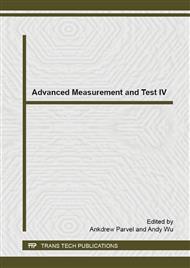p.80
p.84
p.90
p.97
p.104
p.111
p.121
p.127
p.131
Measurement of Thermo-Radiation Characteristics of IR Window Materials
Abstract:
When aircrafts have hypersonic flights in the atmosphere, high-temperature IR windows become the main factor of complicated aero-thermo-radiation effects, which reduce the performance of IR detection systems, or even make these detection systems fail. Consequently, measuring thermo-radiation characteristics of IR window material is essential for the assessment of aero-thermo-radiation effect. By analyzing thermal radiation transfer in IR windows, a method is proposed to measure thermo-radiation characteristics of IR window materials, and an experimental platform is established. Based on the platform, thermo-radiation characteristics of a sapphire IR window of a MWIR detection system in a hypersonic vehicle are measured. The results indicate that, the thermo-radiation characteristics of the sapphire IR window material in 3.7μm-4.8μm have an approximate cubic relationship with temperature at 100~350. With the rise of temperature, the transmittance of the sapphire material decreases, while the self-radiation increases. Subsequently, the self-radiation can drive detector into saturation easily, of which the influence on the MWIR detection system is bigger than that of the transmittance. And, with thickness increasing, transmittance decreases exponentially, and self-radiation increases, but the increment decreases exponentially. Consequently, as IR windows’ thickness or temperature increases, SNR of the MWIR detection system declines, saturation of IR detectors occurs easily.
Info:
Periodical:
Pages:
104-110
Citation:
Online since:
January 2015
Authors:
Price:
Сopyright:
© 2015 Trans Tech Publications Ltd. All Rights Reserved
Share:
Citation:


